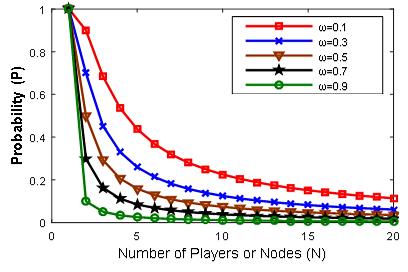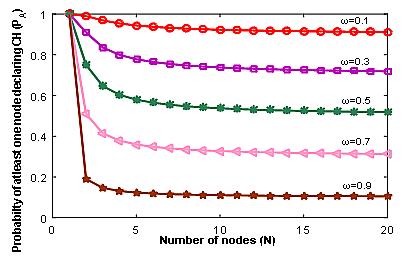
4 minute read
A GAME THEORETIC APPROACH FOR ENERGY OPTIMIZATION IN CLUSTERED WIRELESS AD HOC SENSOR NETWORKS
from A GAME THEORETIC APPROACH FOR ENERGY OPTIMIZATION IN CLUSTERED WIRELESS AD HOC SENSOR NETWORKS
by TuEngr.com
International Transaction Journal of Engineering, Management, & Applied Sciences & Technologies
http://TuEngr.com
Advertisement
PAPER ID: 10A13H
A GAME THEORETIC APPROACH FOR ENERGY OPTIMIZATION IN CLUSTERED WIRELESS AD HOC SENSOR NETWORKS

Asad Saleem
Malik Asfandyar
Hasan Mahmood
a
Key Laboratory of Specialty Fiber Optics and Optical Access Networks, Joint International Research Laboratory of Specialty Fiber Optics and Advanced Communication, Shanghai Institute for Advanced Communication and Data Science, Shanghai University, 200444, Shanghai, CHINA. b
School of Automation and Electrical Engineering Beihang University of Aerospace and Aeronautics (BUAA), 100083, Beijing, CHINA. c
Shenzhen Key Laboratory of Antennas and Propagation, College of Electronics and Information Engineering, Shenzhen University, 518060, Shenzhen, CHINA. d
Department of Electronics, Quaid-i-Azam University, Islamabad, 45320, PAKISTAN.
A R T I C L E I N F O A B S T RA C T Article history: Received 09 May 2019 Received in revised form 19 June 2019 Accepted 24 July 2019 Available online 10 August 2019 Keywords: Ad hoc networks; Clustering Schemes; Game Theory; WANET; Network Lifetime; D-CROSS; ZPR; LEACH. In this paper, our objective is to use the game-theoretic approach for clustered wireless ad-hoc networks to optimize system lifetime. Game theory (GT) has been exploited in the domain of biology and economics, but lately it is applied in routing and packet forwarding in Wireless Ad hoc Networks (WANETs). However, the clustering topic, concerned with self-directedness of sensor nodes into big groups, has not been examined under this model. Distance-based Clustered Routing For Selfish Sensors (D-CROSS) protocol assists in accomplishing energy conservation where every single sensor node is nominated as cluster head (CH) with zero probability rule (ZPR). Our analysis follows the non-cooperative game theoretic approach where each sensor node selfishly plays and tries to preserve its own energy and maximize its lifetime. We demonstrate here the Nash Equilibrium for mixed and pure strategies and anticipated payoffs. The comparison of the D-CROSS protocol with the Low Energy Adaptive Clustering Hierarchy (LEACH) protocol through simulations demonstrates that D-CROSS achieves improved performance in terms of network lifetime. © 2019 INT TRANS J ENG MANAG SCI TECH.
1. INTRODUCTION Wireless Ad hoc Network (WANET) is basically a distributed network and it does not depend upon pre-existing infrastructure. Each such network consists of nodes with an external or internal antenna, radio transceiver, and battery. Each node is responsible for routing by packet forwarding.
proposed to improve the ad hoc network lifespan. The cluster head (CH) was selected based on clustering game and Zero Probability Rule (ZPR) was considered for selection of each sensor node as CH. We compared the relation of D-CROSS and LEACH protocol for lifetime under such situation, where the number of nodes is not constant. We have found that D-CROSS have better performance than LEACH protocol for WLANs. The rest of the paper is structured as follows. Section II defines the radio model and energy dissipation. The game-theoretical approach and selection of CH methodology are demonstrated in section III. Section IV deals with the results and simulations for D-CROSS model and section V illustrates the conclusion.
RADIO MODEL AND ENERGY DISSIPATION Radio model consists of energy dissipation on the receiver and transmitter side (Heinzelman,
Chandrakasan, & Balakrishnan, 2000). For radio model, e elec = 50nJ/bit is taken into account for transmitter and for receiver side. Moreover, e amp2 = 10pJ/bit/m 2
represents packets length, S represents distance between transmitter to the receiver and β =2 for free
space model. Following (1)
shows energy dissipation of transmitter amplifier an(2) shows total
energy dissipation on transmitter side.
(1)
(3)
Figure 1: The Radio Model.

Figure 3: The Probability of declaring itself as Cluster head

Mostly all nodes do not declare themselves as cluster heads so the network can face a condition
when only one node plays cooperatively. The probability when at least single node out of all
The probability of only one node declaring itself as cluster head is different from the probability of each node declaring itself as CH, as given below in Figure 4.
Figure 4: The Probability of at least one node declaring itself as cluster head.

Simulation for a lifetime is conducted in an area of 50 x 50 where N = 100 sensor nodes are
placed randomly. The sink was positioned at (25, 125). Initially, the total energy for entire nodes
was fixed as E init = 0.5, however the data packets had a fixed value of ��=2000. The path loss (PL) exponent for lower range transmission among two nodes was 2 and for long-range
transmission was 4. The average clusters per round were 5% which proposes that after every 20 rounds, all sensor nodes must have served as CH only once. The parameters for consumption of energy are shown in following Table 2.




